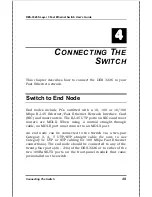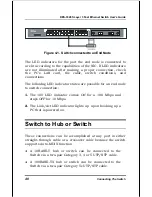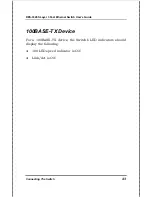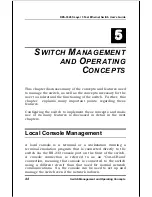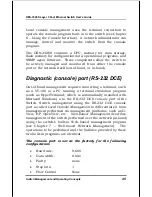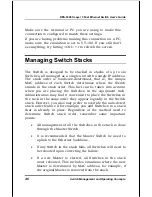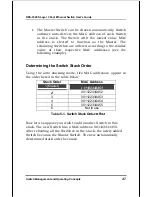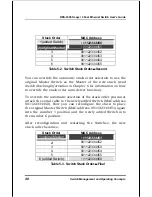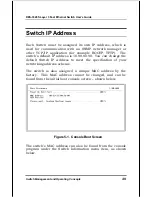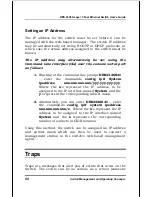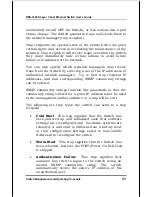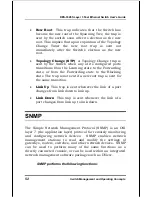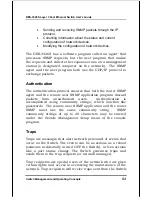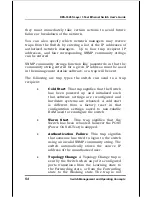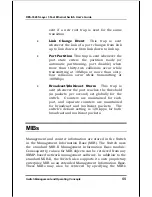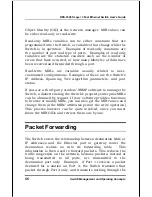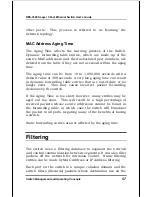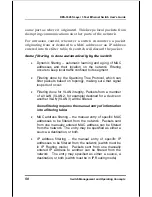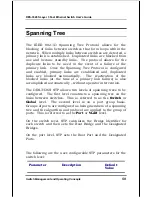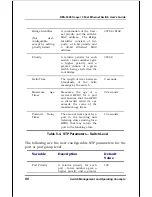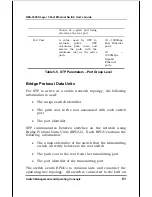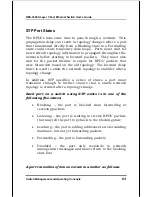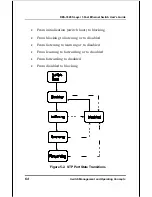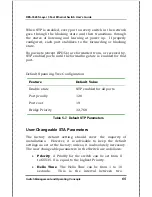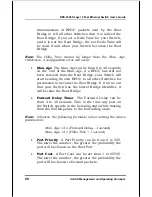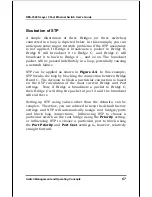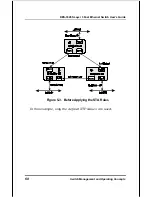
DES-3326S Layer 3 Fast Ethernet Switch User’s Guide
Switch Management and Operating Concepts
53
•
Sending and receiving SNMP packets through the IP
protocol.
•
Collecting information about the status and current
configuration of network devices.
•
Modifying the configuration of network devices.
The DES-3326S has a software program called an ‘agent’ that
processes SNMP requests, but the user program that makes
the requests and collects the responses runs on a management
station (a designated computer on the network). The SNMP
agent and the user program both use the UDP/IP protocol to
exchange packets.
Authentication
The authentication protocol ensures that both the router SNMP
agent and the remote user SNMP application program discard
packets from unauthorized users. Authentication is
accomplished using ‘community strings’, which function like
passwords. The remote user SNMP application and the router
SNMP must use the same community string. SNMP
community strings of up to 20 characters may be entered
under the
Remote Management Setup
menu of the console
program.
Traps
Traps are messages that alert network personnel of events that
occur on the Switch. The events can be as serious as a reboot
(someone accidentally turned OFF the Switch), or less serious
like a port status change. The Switch generates traps and
sends them to the trap recipient (or network manager).
Trap recipients are special users of the network who are given
certain rights and access in overseeing the maintenance of the
network. Trap recipients will receive traps sent from the Switch;

